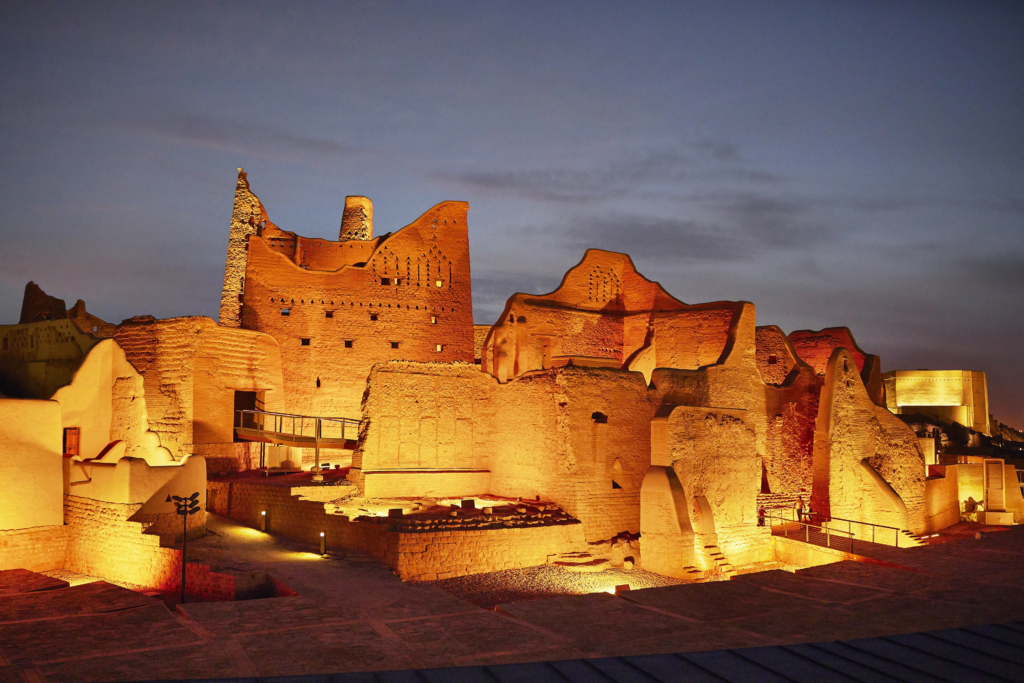Saudi Arabia archaeological sites are making global headlines once again. The Kingdom has recently registered over 700 new archaeological sites across various regions, marking a significant leap forward in its efforts to preserve and showcase its rich cultural heritage. This announcement comes as part of Saudi Arabia’s broader initiative under Vision 2030 to promote tourism and cultural development.
According to the Saudi Heritage Commission, these newly recorded sites were identified during field surveys conducted in the first quarter of 2025. These findings reflect the depth of ancient human activity and civilization that once thrived in the Arabian Peninsula, many of which date back thousands of years.
A Historic Discovery Across the Kingdom
The newly registered Saudi Arabia archaeological sites span multiple regions, from the north in Al-Jawf and Tabuk to the central and southern areas like Riyadh and Najran. These discoveries include:
- Ancient rock inscriptions and carvings
- Pre-Islamic ruins
- Burial sites and tombs
- Remains of trade routes
- Historic wells and settlements
The Saudi Heritage Commission noted that some of these sites may be linked to major ancient civilizations that once existed in the region, such as the Nabataean, Lihyanite, and Dadanite cultures.
Each site is being carefully documented with photographs, GPS data, and detailed field notes. This data will form part of the official national archaeological registry to ensure proper conservation and research in the future.
The Role of Vision 2030 in Cultural Preservation

The increase in Saudi Arabia archaeological sites aligns with Vision 2030, the Kingdom’s national plan to diversify its economy beyond oil and strengthen cultural identity. A core element of this vision is to position Saudi Arabia as a global destination for heritage tourism.
By investing in archaeological surveys, museum development, and site preservation, the Saudi government aims to make history accessible to both its citizens and international visitors.
In fact, several of the newly discovered locations are expected to be opened to the public in the coming years, with guided tours, interpretive signs, and visitor centers. This will not only create job opportunities for locals but also enhance Saudi Arabia’s international image as a center for culture and history.
Technology Boosting Archaeological Exploration
The registration of these 700+ archaeological sites in Saudi Arabia was made possible through advanced technologies. The use of geographic information systems (GIS), drones, satellite imaging, and 3D modeling has allowed archaeologists to explore vast and previously inaccessible areas more efficiently.
Many of the new discoveries came from remote desert landscapes, mountainous terrains, and ancient trade corridors. These tools help reduce the time and cost of excavation while increasing the accuracy of documentation.
The integration of tech in heritage work is part of Saudi Arabia’s smart approach to preserving its past without interrupting development and modernization efforts.
Global Importance of Saudi Arabia’s Archaeological Record
Saudi Arabia’s geographical location made it a vital crossroads for trade, culture, and migration for centuries. As such, the Saudi Arabia archaeological sites provide invaluable insights into early human settlement, religion, and trade across the Middle East and beyond.
Archaeologists believe some of the new sites could reshape the understanding of migration routes taken by ancient humans from Africa to Asia. Inscriptions and structures also reflect the evolution of language, art, and spiritual practices.
Moreover, many of these sites hold untold stories of pre-Islamic Arabia, a lesser-known period in world history that is now receiving global academic attention thanks to Saudi Arabia’s initiatives.
Community Engagement and Educational Value

One of the standout features of this archaeological campaign is the involvement of local communities. Citizens are being trained to help preserve nearby heritage and guide visitors. Educational programs in schools are also being updated to include modules on Saudi Arabia archaeological sites, ensuring the next generation understands and values their national history.
The Heritage Commission has also launched an online portal where people can explore digital archives of newly registered sites, view 3D reconstructions, and access historical data.
Future Plans for Archaeological Development
The discovery of 700+ new Saudi Arabia archaeological sites is only the beginning. The Heritage Commission stated that it will continue conducting surveys throughout 2025 and beyond, with a goal of recording thousands more locations in the next decade.
Several international partnerships are already underway. Collaborative digs with universities from France, the UK, and the United States are planned. These partnerships will not only enhance the credibility of the research but also promote global cultural exchange.
The Commission is also working with UNESCO to nominate additional Saudi heritage sites for World Heritage Site status. With each new discovery, Saudi Arabia is not only uncovering its past but also carving a place for itself on the world’s cultural map.
Conclusion
With over 700 new Saudi Arabia archaeological sites registered in early 2025, the Kingdom is making unprecedented progress in documenting and preserving its ancient history. These discoveries showcase the land’s deep-rooted civilization and strengthen the nation’s cultural identity under Vision 2030.
By blending tradition with modern technology and international collaboration, Saudi Arabia is setting a powerful example for heritage management in the 21st century.
Also Read – Child Education Franchise Market: 7 Reasons It’s Growing Fast


